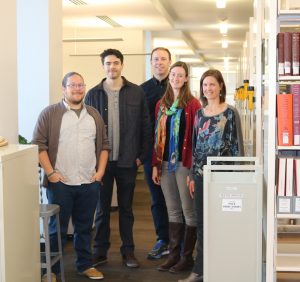Sustainable Energy Fund
The Sustainable Energy Fund (SEF) is a revolving loan fund dedicated to large-scale sustainability projects at the University of Utah. The SEF is transforming the campus through energy conservation, waste reduction, operation efficiency and behavior change projects. Often the initial costs of these projects – such as solar panels and high efficiency water heaters can be a barrier for the university, even if the project will save money over its lifetime. Students created the SEF to fill this gap and implement these projects.
Quite simply, revolving funds are renewable sources of money for renewable projects.
Sustainability-oriented revolving loan funds exist across campuses nationwide. A revolving loan fund (RLF) provides up-front capital to fund renewable energy and energy efficiency projects that result in cost savings. As the projects pay back the loan, the money coming in from these cost savings is used to fund other projects. A revolving fund capitalizes on the long-term profitability of sustainability projects by covering initial costs while securing the return they produce for future initiatives, making such projects much more feasible.
Additionally, RLFs internalize the benefits of cost savings and energy production. Because the SEF uses the university’s existing resources to pay for projects, rather than seeking external funding, it allows the university to capture the full financial benefits of renewable energy and efficiency projects.
The SEF is student funded, and its success is driven by the wealth of student ideas.
In 2003, a group of students organized and passed $1 student fee per semester to support renewable energy projects. In 2008, the ASUU passed a $2.50 student fee per semester to form the Sustainable Campus Initiative Fund in response to an increasing demand for sustainable infrastructure on campus and opportunities to gain real-world project management experience. In 2016, the SEF was created by combining funds from each of those fees to support projects with a payback period of 7-15 years.
The majority of the SEF projects have been funded only through student fees. Of the 80+ funds like this at campuses around the nation, the SEF is one of five that relies almost entirely on student funding.
Sustainable investment on campus doesn’t have to rely solely on student fees. University of Utah faculty, staff, alumni and supporters have an opportunity to match the efforts of the students to build a sustainable campus. Join our students to take direct, tangible action to address climate change and realize our students’ vision of a clean energy future. A $20 per month donation (just $10 per paycheck for U employees) will offset a single person’s portion of all carbon emissions coming from campus operations. Our students have put their dollars to work for the greater good. With your help, we will continue to make the U a better place for all who live, work and play here.
Click here to donate to the Sustainable Energy Fund and make it grow.
To date, the SEF has invested $382,499 in efficiency and renewable energy projects on campus, resulting in emissions savings of 771 metric tons of CO2 equivalent, which is comparable to not consuming more than 86,700 gallons of gas.
In the past few years, our students’ efforts have resulted in the following:
- Replaced old heaters at Red Butte Garden greenhouses with new high-efficiency and low-polluting models.
- Installed motion- and daylight-sensitive LED lighting in the Special Collections area of Marriott Library to reduce energy and preserve collections. Featured in @theu here.
- Mounted solar arrays on the S.J. Quinney College of Law parking canopy (100 kW), Kennecott Mechanical Engineering building (34.2kW) and Taft Nicholson Center. The Kennecott Building array and S.J. Quinney College of Law array were featured in @theU.

